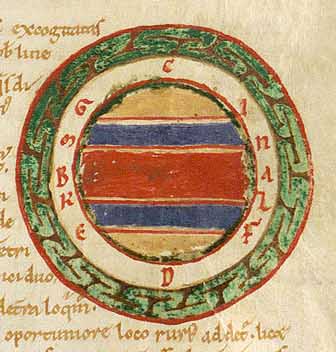The communication between the past and the present is always polluted by interference from the noise of hindsight.So with this ringing in our ears, may I recommend The Discarded Image by C.S.Lewis, An Introduction to Medieval and Renaissance Literature. It starts with two chapters on the Classical Sources, then presents what I would call the Medieval Standard Model. We learn how medieval Europeans respected all classical authorities, whether Pagan or Judaeo-Christian, and brought them together into "the medieval synthesis itself, the whole organization of their theology, science and history into a single, complex, harmonious mental model of the universe."
In looking at their late classical sources, it is sometimes difficult to tell whether the writer is a Pagan or a Christian, because to them it simply "wasn't cricket" to mix theology and philosophy together.
Regarding the model itself, everything came in threes (thrones, principalities, dominions) and there was a triad for every sphere of existence. This derives from Apuleius (c. 123/125 - c. 180). (Here I can't help thinking of the pions: π0, π+ and π−.)
Moreover, it was hardly an 'anthropocentric' model as modern decriers would have it. According to Macrobius (and typical of the time), as the elements separated out, aether went to the top, then air, then water, and finally earth as a kind of 'skip' where all the rubbish ended up!

Climatic zones, from Macrobius, Commentarii in Somnium Scipionis
Finally, a quote from the book itself:
[in the Somnium Scipionis] Africanus explains ... that 'all who have been saviours or champions of their native land or increased its dominions have their appointed place in Heaven' ... ... CICERO is making a heaven for public men, for politicians and generals. Neither the Pagan sage (like Pythagoras), nor the Christian saint, could enter it.



Comments